
Dordrecht, historically known in English as Dordt or Dort, is a city and municipality in the Western Netherlands, located in the province of South Holland. It is the province's fifth-largest city after Rotterdam, The Hague, Leiden, and Zoetermeer, with a population of 119,115.
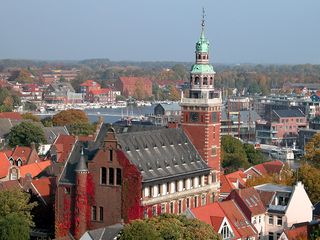
Leer is a town in the district of Leer, in the northwestern part of Lower Saxony, Germany. It is situated on the river Leda, a tributary of the river Ems, near the border with the Netherlands. With 34,958 inhabitants (2021), it is the third-largest city in East Frisia after Emden and Aurich.
The Remonstrants is a Protestant movement that split from the Dutch Reformed Church in the early 17th century. The early Remonstrants supported Jacobus Arminius, and after his death, continued to maintain his original views called Arminianism against the proponents of Calvinism. Condemned by the synod of Dort (1618–1619), the Remonstrants remained a small minority in the Netherlands. In the middle of the 19th century, the Remonstrant Brotherhood was influenced by the liberal Dutch theological movement.
Reender Kranenborg was a Dutch theologian, pastor, and scholar of religion. He was editor of the magazine Religious Movement in the Netherlands published by the institute of religious studies of the Free University in Amsterdam. He researched cults as well as the anti-cult movement in the Netherlands.
The Groningen Theology was a theological movement in the Dutch Reformed Church of the mid-nineteenth century that sought a middle way between theological rationalism and orthodox Calvinism. The innovators of the Groningen theology—Petrus Hofstede de Groot (1802-1886), Johan Frederik van Oordt (1794-1852), and Louis Gerlach Pareau (1800-1866)—were professors at the Royal University of Groningen who met weekly with friends and pastors starting in 1835 to study the New Testament. Professor Willem Muurling (1805-1882) joined the society after Van Oordt accepted a chair at Leiden in 1839. The Groningen theologians attracted national attention above all through their journal, Waarheid in Liefde, which ran from 1837 to 1872.

M. Vasalis, was a Dutch poet and psychiatrist.
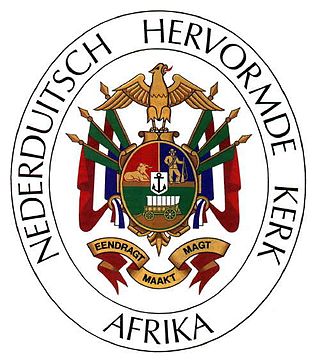
The Dutch Reformed Church in Africa is a Reformed Christian denomination based in South Africa. It also has congregations in Namibia, Botswana, Zambia and Zimbabwe. Along with the Dutch Reformed Church in South Africa (NGK) and the Reformed Churches in South Africa, the NHKA is one of the three Dutch Reformed sister churches of South Africa. The NHKA retains the old Nomenclature Nederduitsch, the word originally referring to the Dutch language. The word refers to the Low Saxon language today. The Dutch language remained the official language of the church until 1933 when the church started functioning almost exclusively in Afrikaans.

Willem Muurling was a Dutch theologian who was a native of Bolsward. He was father-in-law to theologian Abraham Kuenen (1828-1891).

Louis Gerlach Pareau, was a Dutch theologian born in Deventer. He was the son of Jean Henri Pareau (1761–1833), a professor of Oriental languages at the University of Utrecht.

Johan Frederik van Oordt; name sometimes spelled as Joan Frederik van Oordt was a Dutch theologian born in Rotterdam.

Arie Theodorus van Deursen was a Dutch historian whose focus was the early modern period. He was Professor Emeritus of History at the Vrije Universiteit in Amsterdam. He was a specialist in Dutch history of the 16th and 17th century.
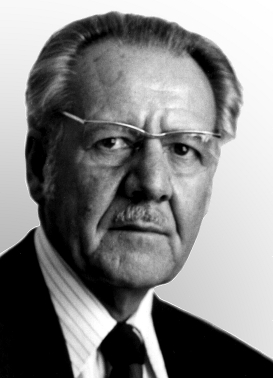
Albertus (Albert) Stephanus Geyser was a South African cleric, scholar and anti-apartheid theologian. Geyser became an outcast in the white Afrikaner community because of his theological opposition to apartheid and to the Broederbond, the secret male Calvinist organisation that covertly steered South African politics during the apartheid era. He obtained master's and doctoral degrees cum laude, specializing in Greek and Latin. At the age of 27 he was appointed lecturer, and a year later, professor in the Theological Faculty of the Nederduitsch Hervormde Kerk at the University of Pretoria. Geyser contributed to the first annotated edition (1953–1958) of the Bible in Afrikaans, founded the Christian Institute, and was the first South African to be elected as a member of Studiorum Novi Testamenti Societas.

The Doopsgezinde kerk is a historical hidden Mennonite church dating from the 17th century between the Grote Houtstraat, Peuzelaarsteeg and the Frankestraat in Haarlem, Netherlands.

Storm Off a Sea Coast, also known as The Breakwater, is a 1670 oil on canvas painting by the Dutch Golden Age painter Jacob van Ruisdael. It is in the collection of the Louvre in Paris.

Dune Landscape near Haarlem, also known as The Bush and The Thicket near Haarlem, is an oil on canvas painting by the Dutch Golden Age painter Jacob van Ruisdael. It is in the collection of the Louvre in Paris.

Panoramic view of the Amstel looking toward Amsterdam is a 17th-century oil on canvas painting by the Dutch Golden Age painter Jacob van Ruisdael. It is in the collection of the Fitzwilliam Museum in Cambridge.
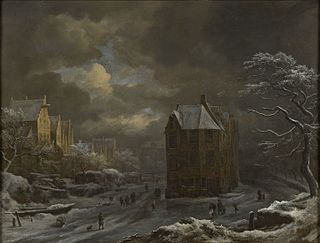
Winter View of the Hekelveld in Amsterdam is a 17th-century oil on canvas painting by the Dutch Golden Age painter Jacob van Ruisdael. It is in a private collection in Scotland.

View of the Dam and Damrak at Amsterdam, also known as The Damrak in Amsterdam, is a 17th-century oil on canvas painting by the Dutch Golden Age painter Jacob van Ruisdael. Since 1866 it is in the collection of the Museum Boymans van Beuningen in Rotterdam.
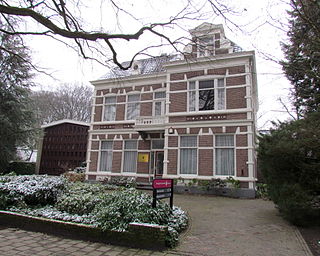
The Theological University of Apeldoorn (TUA) is the Dutch theological university of the Christian Reformed Churches. More than 130 students study at the university in Apeldoorn, Netherlands. The theological course lasts six years. The student is in the bachelor's program for the first three years. This has a more orientating character, and includes the languages Classic Greek and Koine Greek, Latin and Biblical Hebrew. In the three-year master's program that follows, further studies and specialization are discussed. The training is specifically aimed at educating pastors. Furthermore, one tries to keep together the reformed character of the faith and the church and the scientific level of the university. The syllabus consists of subjects such as ethics, apologetics, Old and New Testament, canonical studies, dogmatics, church history, church law and civil subjects.

The west gallery organ in the Aa-kerk in Groningen was built by Arp Schnitger in 1699–1702. Originally built for the Academiekerk in Groningen it was moved to the Aa-kerk in 1815. Today it has 40 stops on three manuals and pedal, and is a monument of European significance.

















